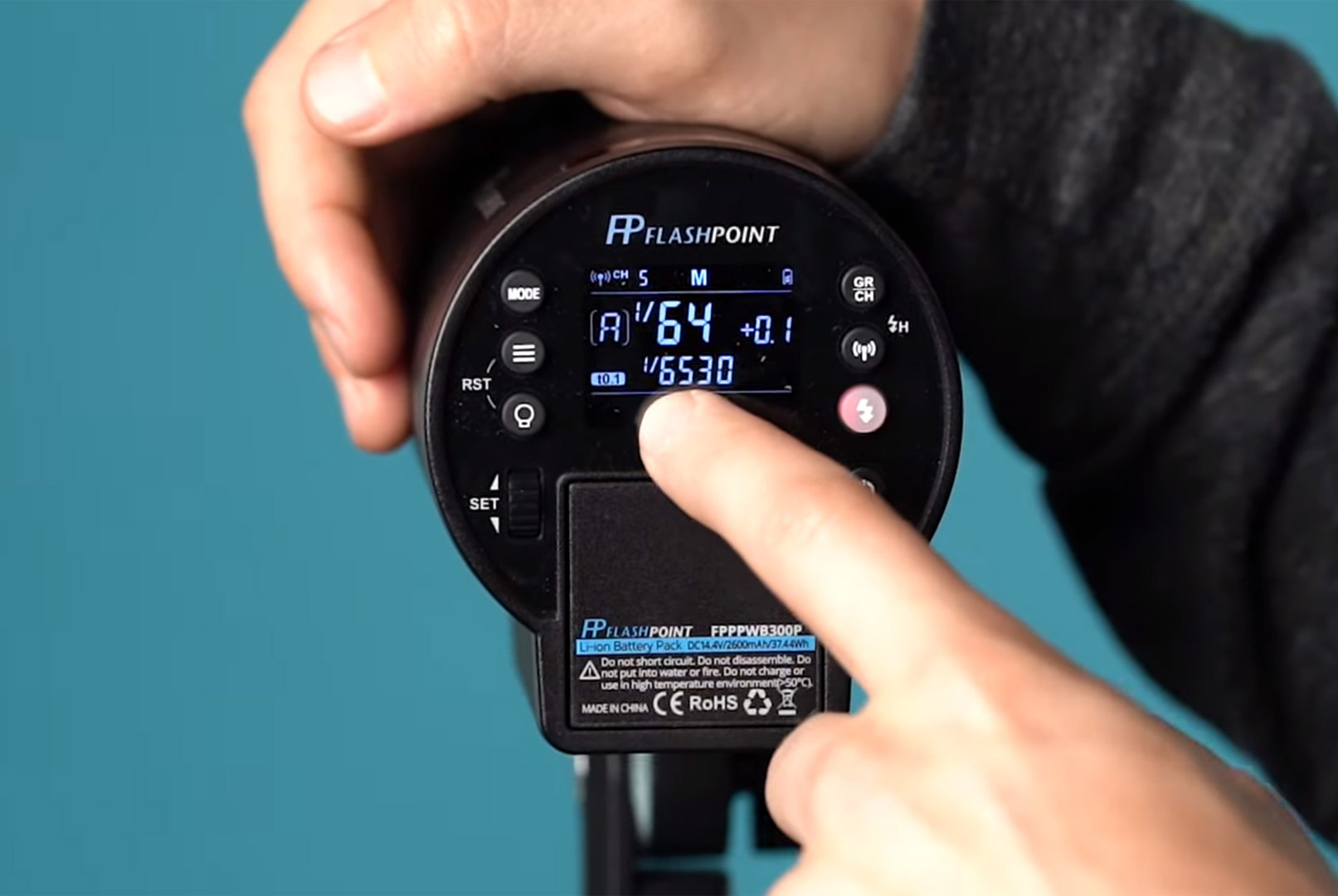The Flashpoint Xplor 1200 Pro has been around for about a year now. Every time I share a behind-the-scenes photo using it, people ask, “Do you really need all that power?” And 90% of the time, the answer is no. The Xplor 1200 Pro is the most powerful option available in the R2 series of strobes. It’s twice as bright as the Xplor 600 Pro, which is already versatile in the brightest outdoor conditions. Yet, the 1200’s impressive brightness is rarely the reason I choose it. The benefit that I’m after is the impressive flash durations (and being able to freeze action is the real reason to get a 1200 Ws flash.
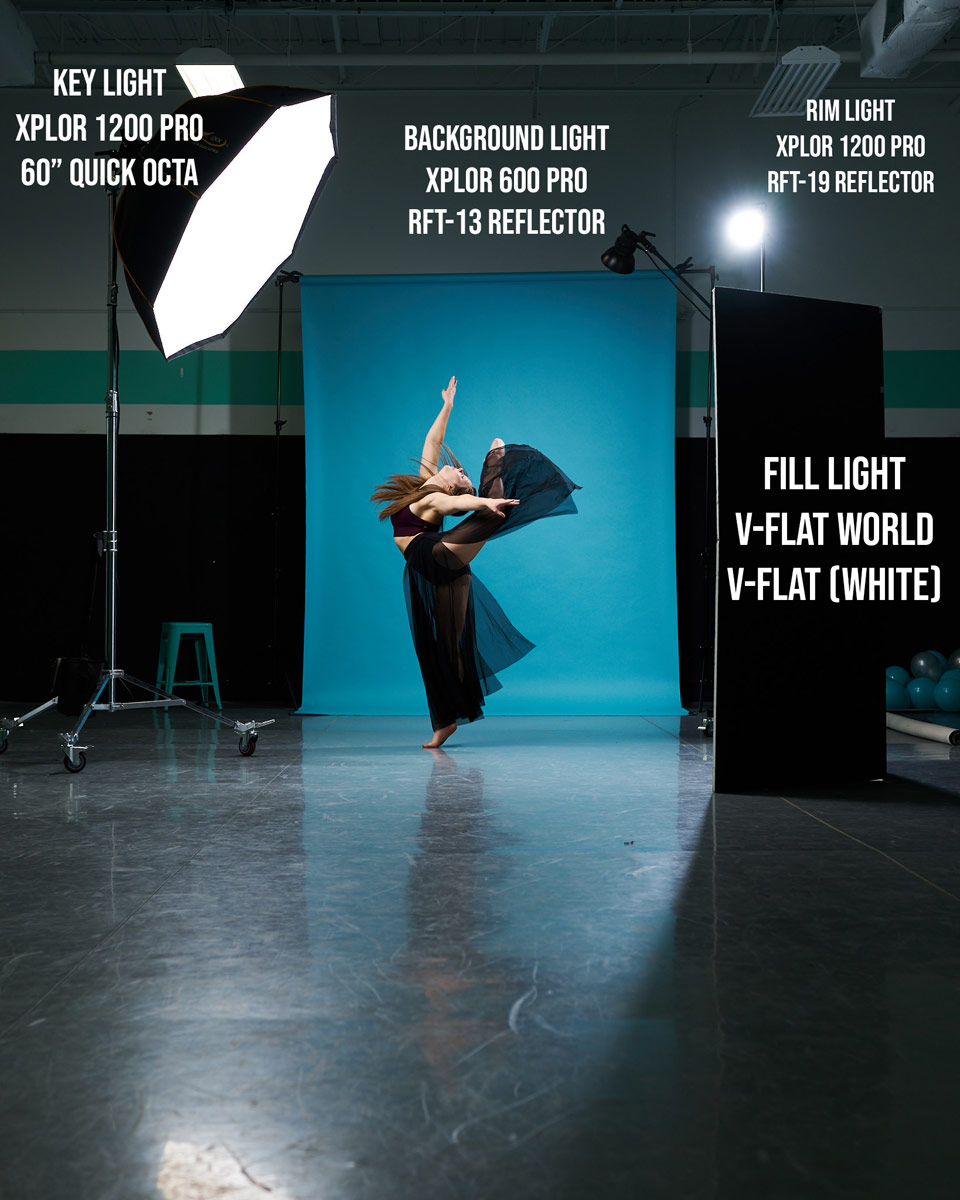
What Is Flash Duration?
Flash duration is the time it takes a strobe to dissipate a flash from peak brightness to a percentage of the peak brightness. This is represented as t.5 = 1/1200 second or t.1 = 1/400 second. The “t” stands for time. The .5 represents 50% of peak brightness, whereas the .1 represents 10% of peak brightness. The fraction is the time in seconds that it takes this dissipation to occur.
I created a gif that shows the difference between long and short flash durations. In the real world, 1/200th of a second is still blazing, so you’ll have to imagine this gif is playing in super slow motion.
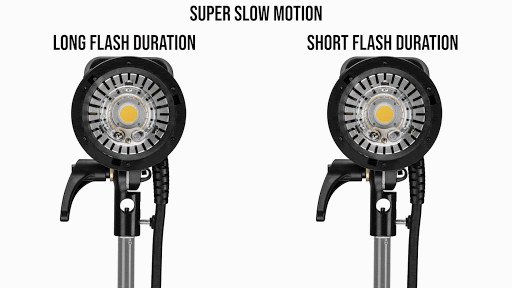
Why Does Flash Duration Matter?
Flash duration is like shutter speed. With shutter speed, the shorter the duration of time (think 1/4000s), the less time your sensor is exposed to light, and the more “frozen” your subject appears.
The same is true with a short flash duration. A strobe lights the scene for a very short period of time, freezing your subject. The faster the movement of your subject, the shorter flash duration is necessary to freeze them in place.
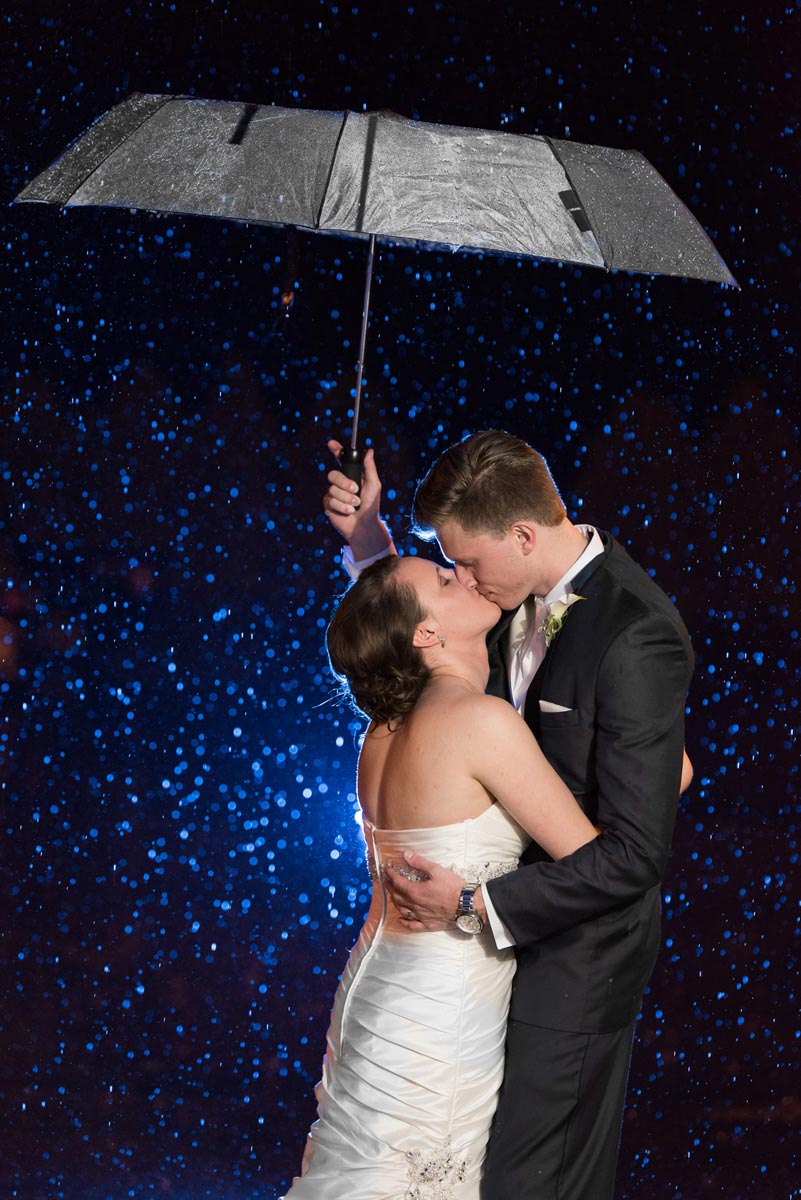
I captured this photo back in 2014. In it, there is a speedlight at very low power with a blue gel illuminating the rain. Notice how the blue raindrops are frozen in the air? That’s the visual result of a short flash duration. The rain is illuminated by the flash for such a short period of time that you can’t see its downward motion. If the same light was at a high power level, it would have had a longer flash duration, and the rain’s movement would be more visible.
How to Control Flash Duration
Before talking about how to take control of your flash duration, it’s important to know that the following is true of Insulated Gate Bipolar Transistor (IGBT) strobes. This includes speedlights and the battery-on-board models in the XPLOR R2 flash series. There are older and more affordable strobes (variable voltage) that do not behave this way.
Flash duration is not something that you can dial up and down like the power level of a flash. Instead, it’s based on the power level of a flash. When a strobe is at a high power level (like 1/1), the t.1 flash duration will likely be around 1/200-1/400 of a second. When a strobe is at a low power level (like 1/128), the t.1 flash duration can be 1/10,000 of a second or even shorter. As you decrease the power level of a strobe, the flash duration gets shorter.
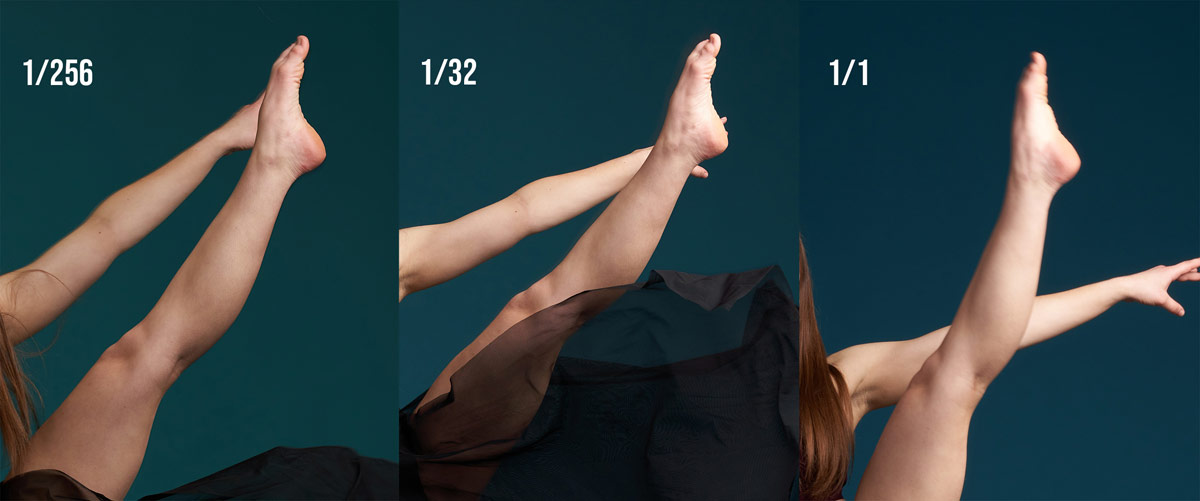
Here’s a closeup of a dancer performing a movement at the same speed over and over. That leg is flying upwards. Each photo was shot using the Xplor 1200 Pro at different power levels.
At minimum power (1/256) you can see the leg is very sharp, completely frozen. The tiny bit of dark motion blurring is from the ambient light, a topic for another day. At 1/32 power the leg is still rendered fairly sharp while in motion. You can tell, especially at the foot, that it is not quite as frozen as 1/256. Finally, at full power, the entire foot and part of the leg is showing significant blurring. The leg is moving too fast to be frozen by the long flash duration.
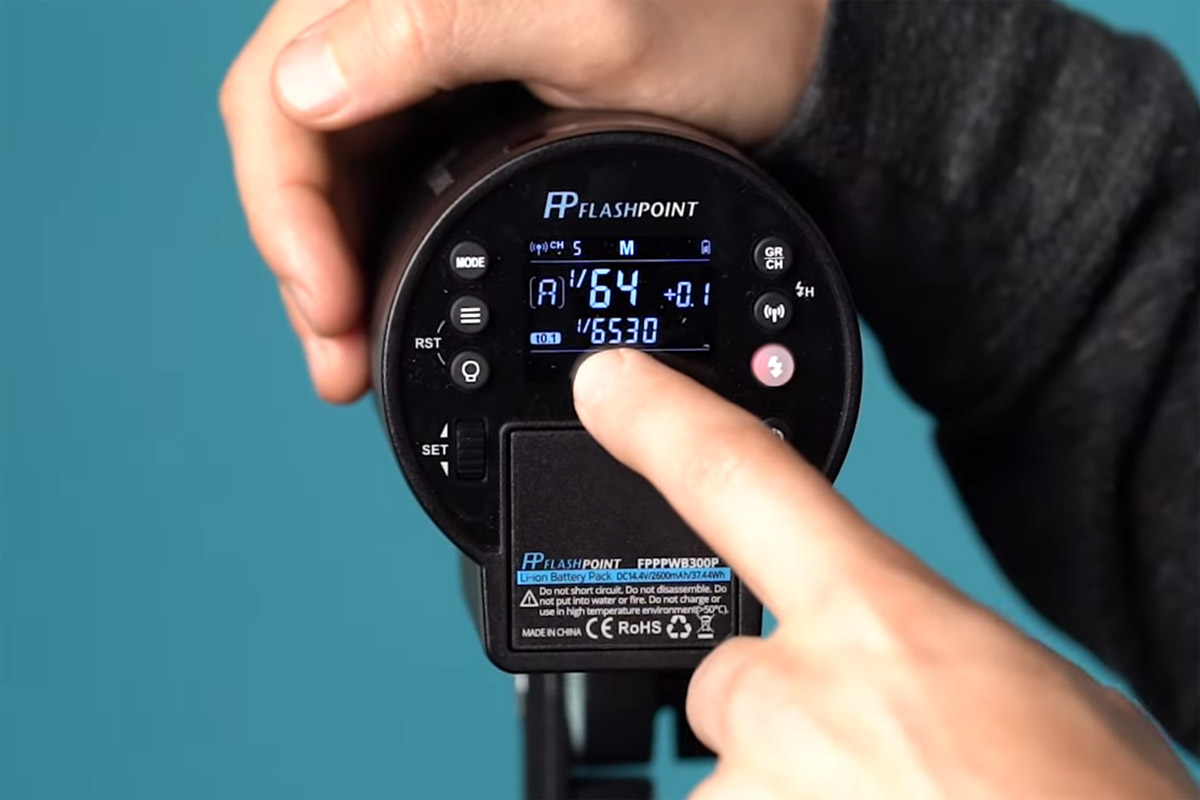
How to Find a Strobe’s Flash Duration
Flash products have slightly different flash durations. The information isn’t always easy to find either. Some manufacturers list the flash durations in spec sheets online, either in t.1 or t.5 values. The R2 series monolights include the t.1 flash duration right on the display. This is very helpful.
Once you find a flash duration that works for a project, you can take note and apply it again later, even with different equipment. You can use an advanced light meter such as a Sekonic L-858d-U to check the flash duration of any strobe. If you can’t find it in any of those places, a quick Google search can find someone else who’s tested it and shared the results.
T.5 vs. T.1 Flash Duration
T.5 flash durations measure the time it takes a light to dissipate from 100% to 50% brightness. T.1 flash durations measure the time it takes a flash to dissipate from 100% to 10% brightness. T.5 is a far less useful figure, seeing as a flash at 50% brightness is still significantly lighting the subject. If you can only find statistics on a strobe’s t.5 flash duration, you can estimate a t.1 figure by multiplying the t.5 figure by 3. So a t.5 flash duration of 1/1500 is close to a t.1 flash duration of 1/500.
Xplor 1200 Pro Flash Durations
The Flashpoint R2 IGBT strobes (Xplor 1200 Pro, Xplor 600 Pro, Xplor 600, Xplor 400 Pro, Streaklight 360 TTL, Xplor 300 Pro, eVolv 200 Pro, eVolv 200, Xplor 100 Pro, Zoom speedlights) follow a similar flash duration “curve”. At full power, the flash duration is around 1/200-1/300s, and it gets shorter as the flash power is lowered.
But not all power levels are equal. The 1200 Pro at 1/2 power is as bright as the Xplor 600 Pro at full power. The 1200 Pro at 1/4 power is as bright as the Xplor 300 Pro at full power. This means, with all other things equal, the 1200 Pro will always be at lower power levels than the other options in the R2 series. The 1200 Pro will always have the shortest flash durations and the most action-freezing potential.
If you ever see me share a BTS on Instagram, check to see if the subject is flying through the air or running at full speed. If so, I probably chose the Xplor 1200 Pro not for its insane brightness, but instead for its ability to freeze that subject!
Written by Rob Hall
Feature image by Rob Hall

